My aquarium fish (Gourami)
Definition gourami:
A gourami is the international common name for some species of freshwater Perciformes tropical fish native to Southeast Asia, mainly the genera Trichopodus and Trichogaster, but also some former generically close members in the family Osphronemidae, which also includes the Siam fighter. In English, the gourami terminology includes climbing poles.
The beaded gourami, species Trichogaster leeri:
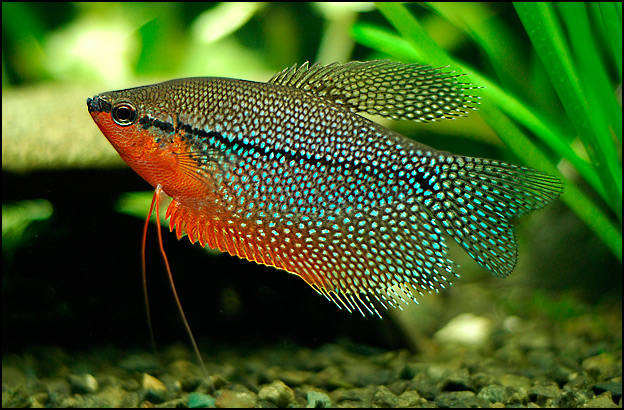
The gourami, called pearl because of the multitude of points forming its pattern of coloring, is a very popular ornamental fish in the aquarium.
The sub-families integrating gouramis
Gouramis are grouped into 2 families and 4 sub-families:
- The Osphronemidae family (more than 130 species):
- Belontiinae,
- Luciocephalinae (formerly Trichogastrinae),
- Macropodinae,
- Osphroneminae.
- The Helostomatidae family (a single species with the kissing gourami).
The etymological origin of the name "gourami" is Javanese, it is also used for some fish families Helostomatidae (kissing gourami) and formerly with fish Anabantidae. The name Polyacanthidae was also used for this family.
The dwarf gourami, Trichogaster lalius is the most common of the Luciocephalinae subfamily:
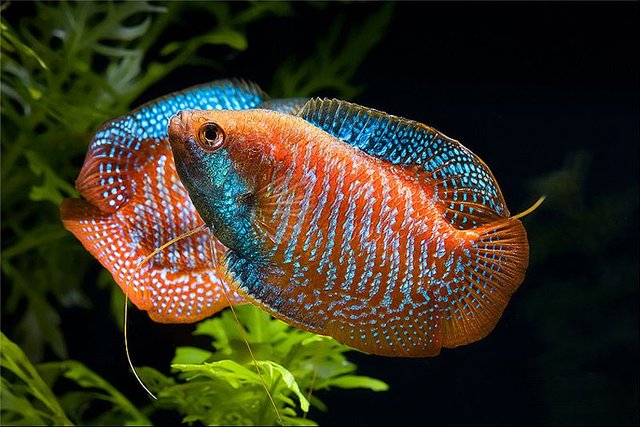
This gourami is called dwarf by its small size, relative, compared to some other members of the family Osphronemidae.
The gouramis of the family Osphronemidae, whatever their taxonomic genus, have as a common feature an ovoid body and especially pelvic fins transformed into long filaments for thigmotactism. The smallest of the gouramis is the dwarf gourami (6-7 cm) and the biggest is the giant gourami (> 60 cm). We sometimes find the word feminized with "gouramies".
List of vernacular names with "gourami"
The list of species with vernacular names including the word gourami is:
Kissing gourami,
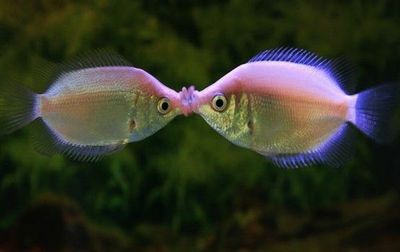
Dwarf gourami,
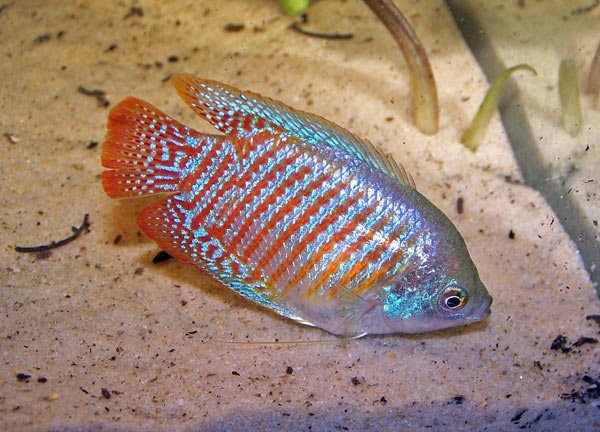
Honey Gourami,
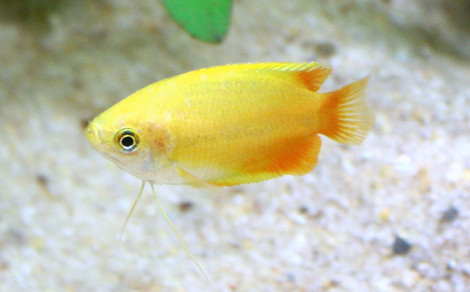
Gourami variegated,
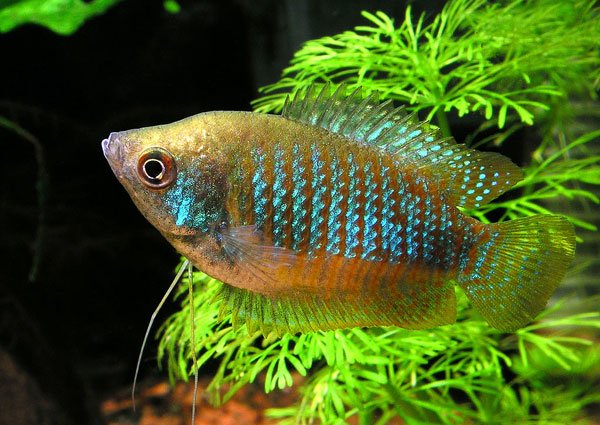
Gourami with big lips,
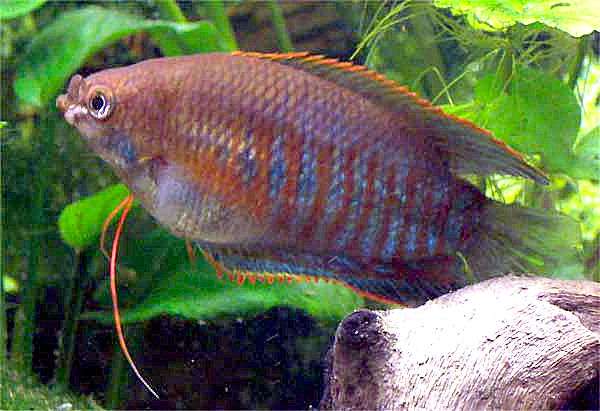
Moonlight Gourami,
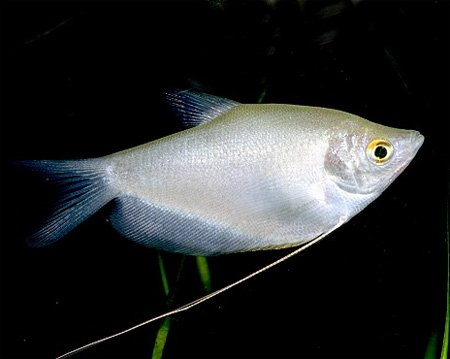
Blue Gourami, but also: opaline gourami, black gourami ...
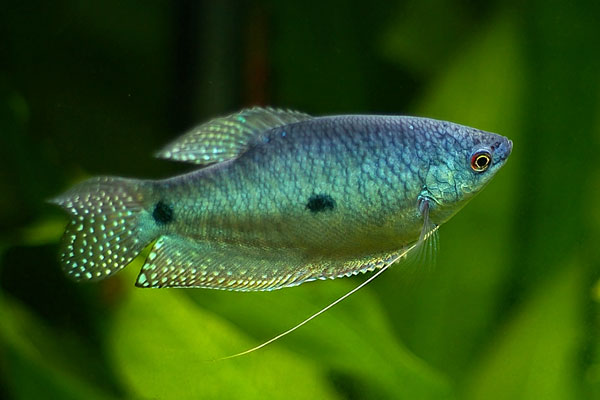
Pearl gourami,
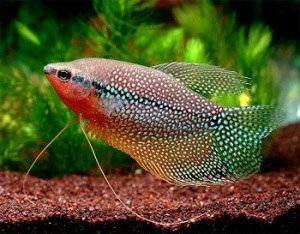
Snake skin gourami,
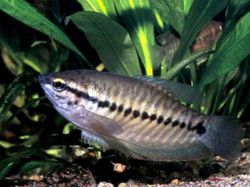
fragile gourami,
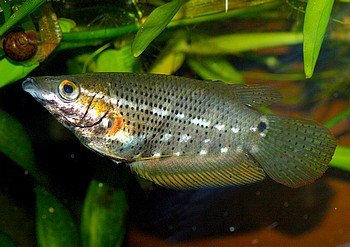
Flecked gourami,
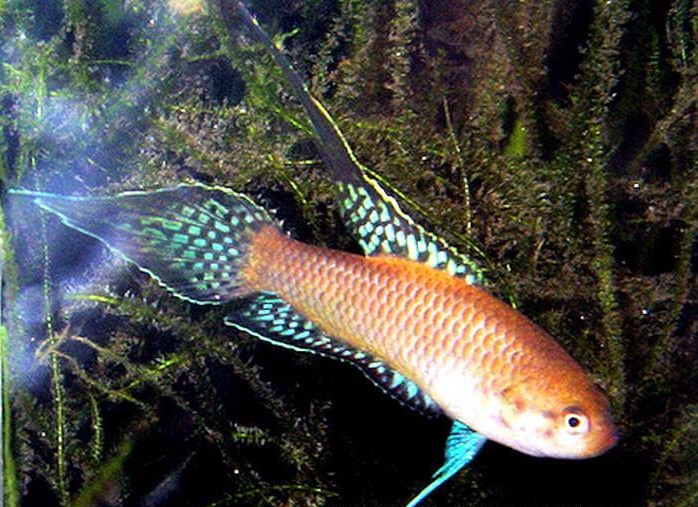
Giant gourami,
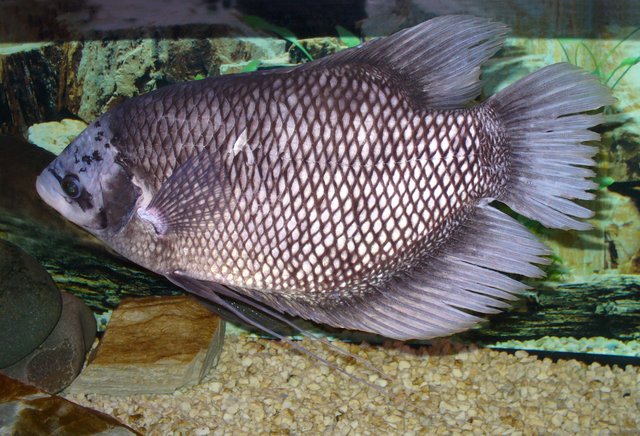
Giant gourami with red fins,
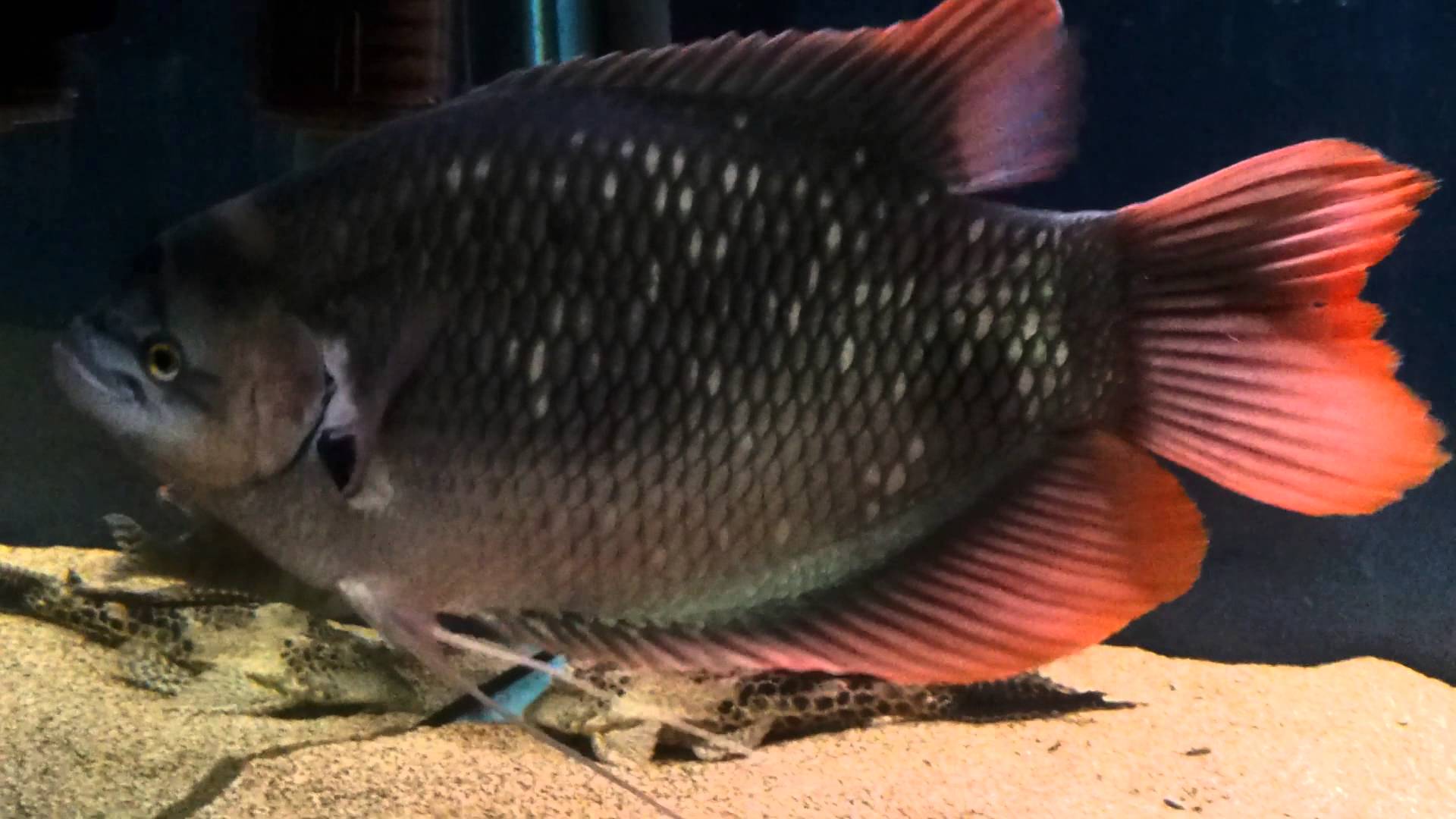
Burmese Gourami,
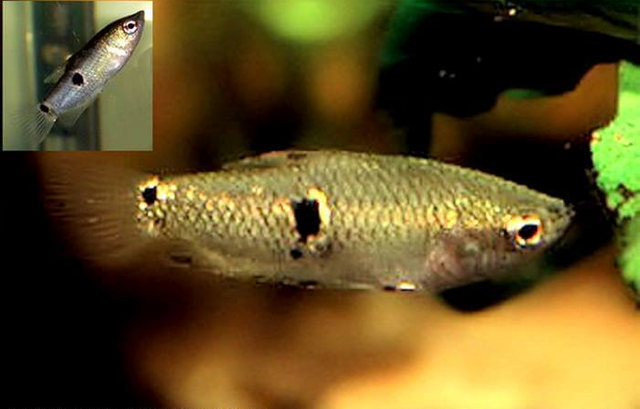
Gourami liquorice,
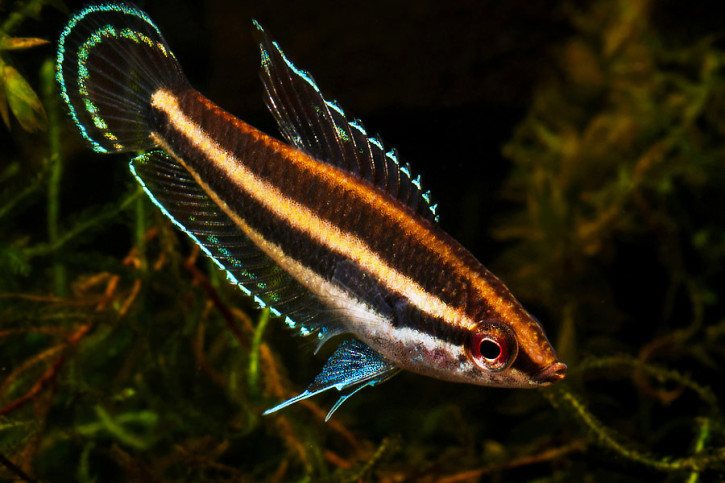
Chocolate Gourami,
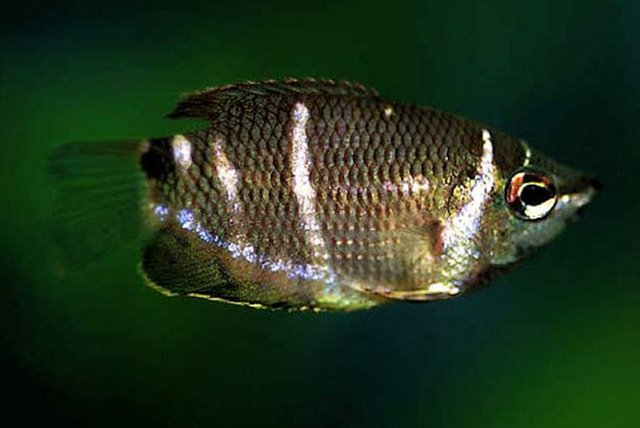
Grumpy Gourami,
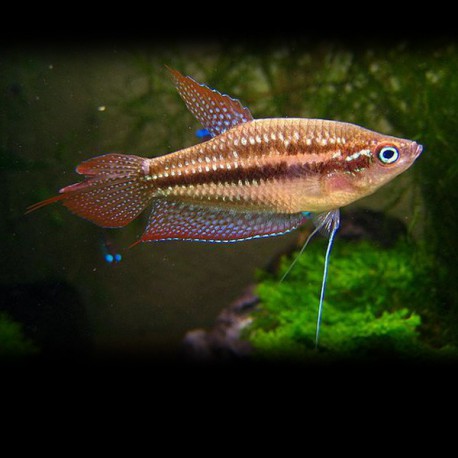
Dwarf Grumpy Gourami,
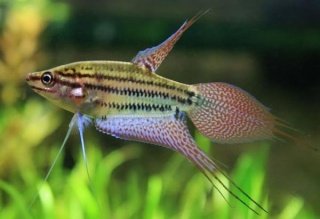
Grumbling Schaller Gourami.
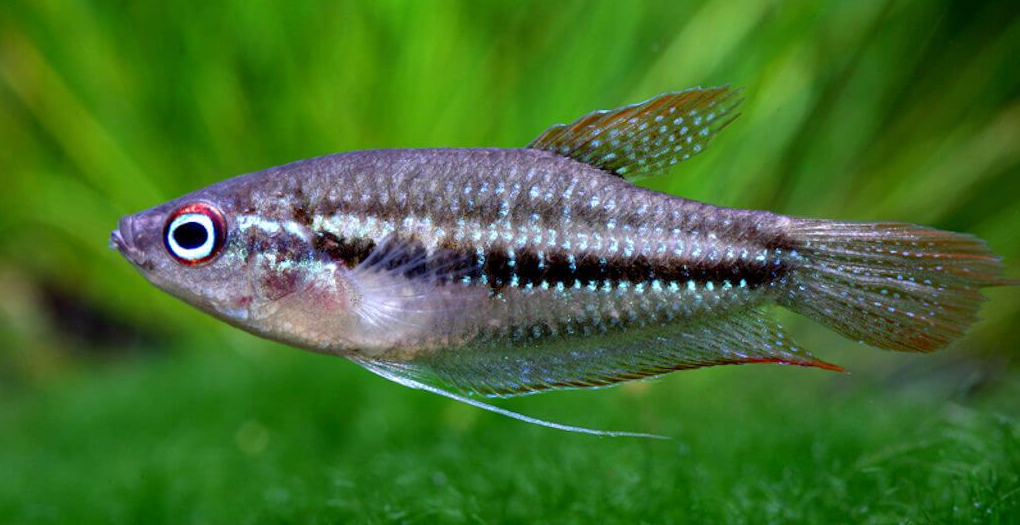
Maintenance in aquarium and adequate parameters
Wild strain or not, different needs
The proper parameters of the aquarium water of this dwarf Gourami are a function of the strain that one possesses. If you have the chance to acquire a wild strain, you must be careful to respect an environment and parameters closer to what they are in their natural habitat. Namely, a slightly acidic water with a pH between 6 and 7 and soft with a GH (total hardness) ideal below the 10 mark.
If you bought your fish in a pet shop, you can be sure that it is Trichogaster from a breeding farm as there are many in South East Asia. The advantage is that over generations they have become accustomed to a quality of water very close to that of our faucets but by cons they are very often carriers of parasites. Careful observation of in-store aquariums to identify any visible signs of disease is imperative. At the slightest warning, it is wise not to buy a single gouramis tray. It is also advisable to quarantine them before any introduction into the community vat to avoid any contamination of the residents already present.
Expect floating plants
The Trichogaster lalius is a fish that spends its entire time on the surface. He does not like direct light. He needs shade to reassure himself and to feel peaceful during periods of rest. It is imperative to offer areas less subject to neon lighting. The ideal is therefore to introduce floating plants like water lettuce or Pistia because he will also adore building his nest of bubbles. One can also use plants that tend to run on the surface of the water and Egeria Najas or Ceratophyllum demersum are perfect in this role.
Absolutely loving my journey with Gourami fish in my aquarium! These little guys are not just pets; they're like aquatic buddies with their own quirky personalities. I remember reading up on them on sites like tank mates for honey gourami to ensure I create the perfect environment. Speaking of environment, it's crucial to pick their tank mates carefully. Gouramis are generally peaceful, but they do have their preferences and quirks.
Here's a funny story: I once introduced a new plant into the tank, and my Gourami, whom I call Mr. Bubbles, was so intrigued. He circled it for hours, like he's guarding a treasure. It was as if he thought the plant was a new fish! Just goes to show how sensitive and aware these creatures are of their surroundings. It's moments like these that make aquarium keeping so rewarding!